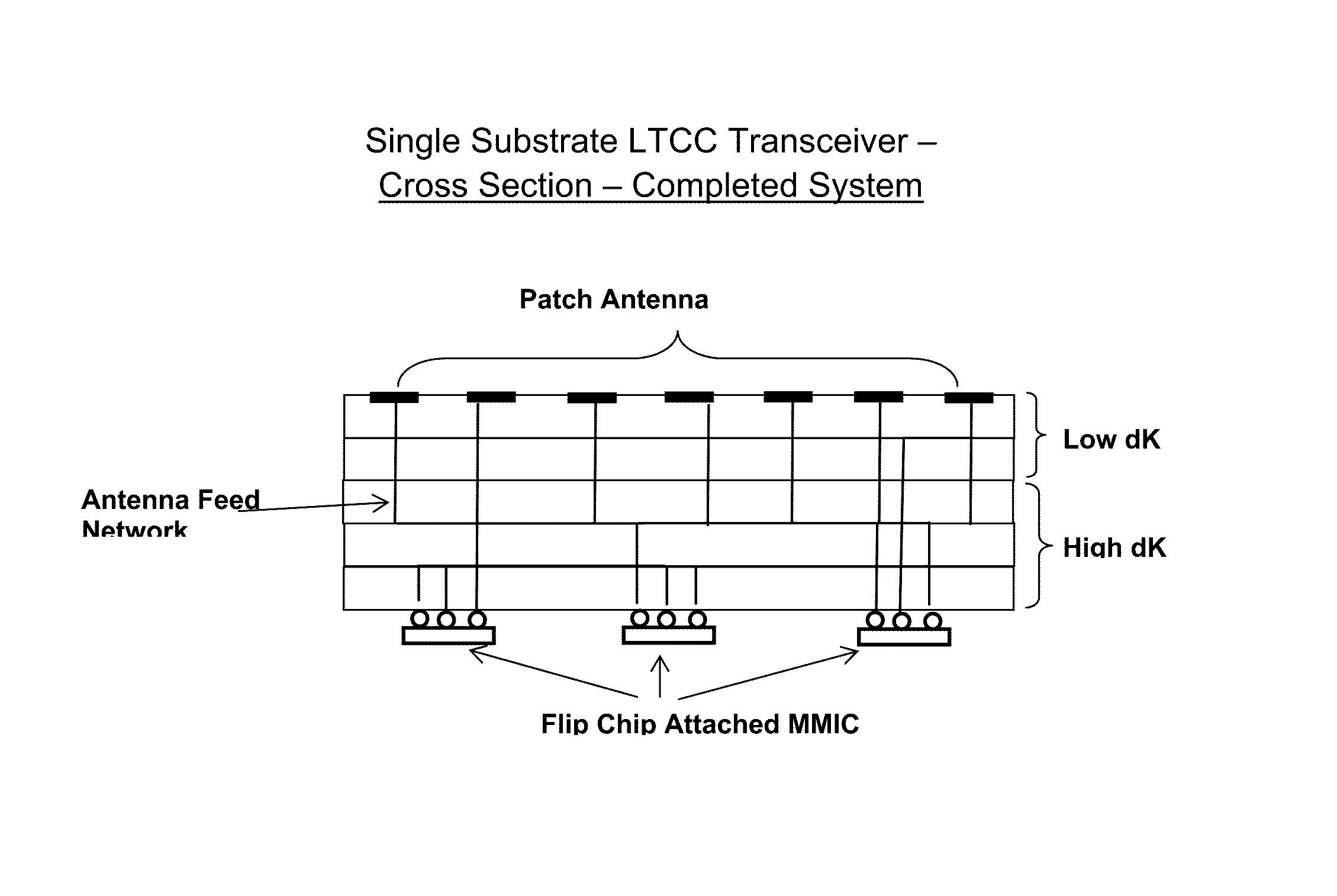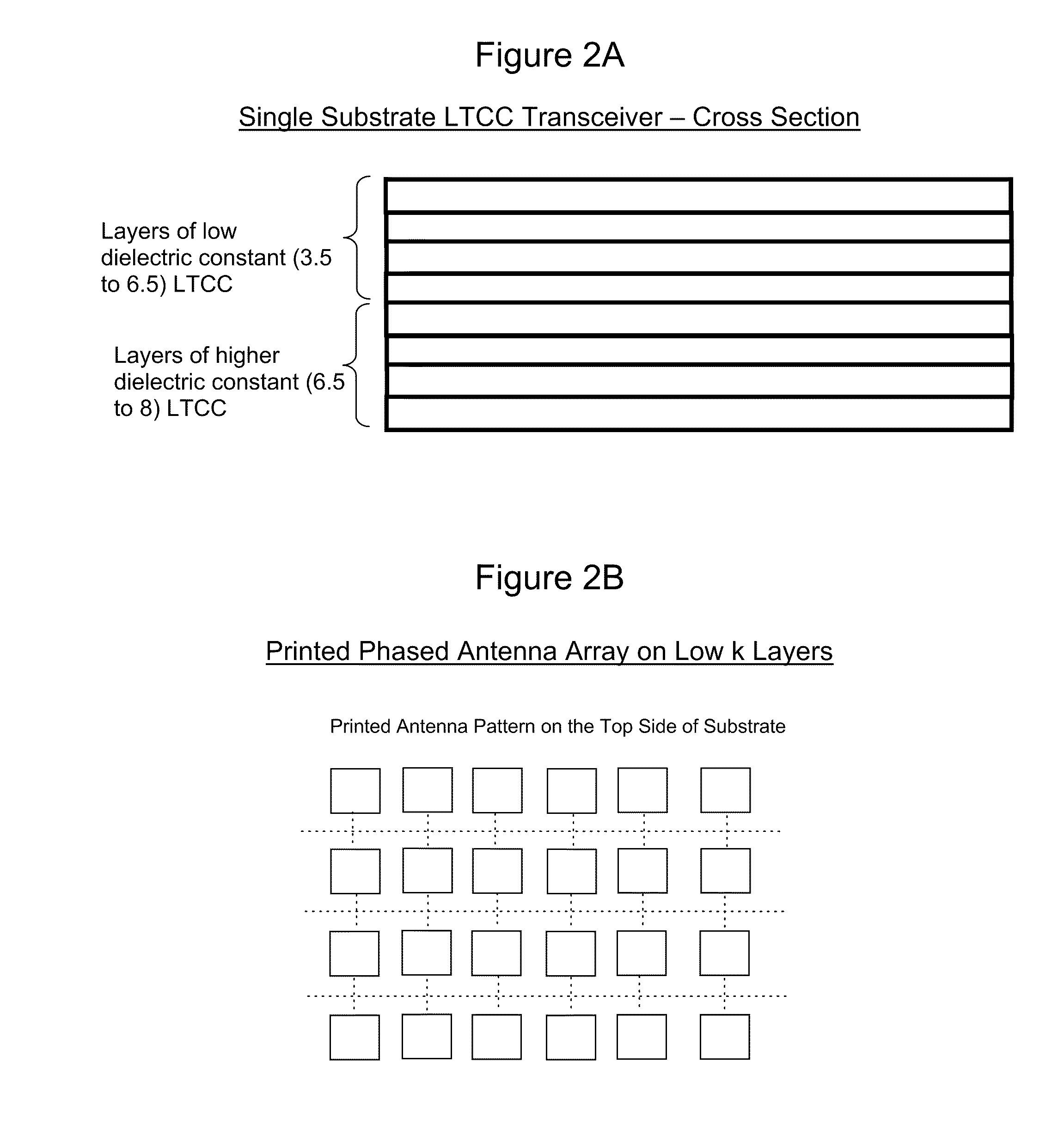Method of manufacturing high frequency receiving and/or transmitting devices from low temperature co-fired ceramic materials and devices made therefrom
a technology of low temperature cofired ceramics and high frequency receiving and/or transmitting devices, which is applied in the structural form of radiating elements, waveguide devices, resonance antennas, etc., can solve the problems of not being suitable as low k materials for electronic packaging signal processing applications, and not being suitable for low k thin film materials to allow for use as low k portions, etc., to achieve cost-effective
- Summary
- Abstract
- Description
- Claims
- Application Information
AI Technical Summary
Benefits of technology
Problems solved by technology
Method used
Image
Examples
Embodiment Construction
[0036]As a basis for describing the considerable improvement of the methods and the resultant structures and devices that are achieved by the practice of the various embodiments of the invention, the state of the art is described wherein multilayer laminate structures that have both low k and high k layers are used that combine the advantages of both classes of laminate materials while limiting any adverse impact on circuit performance. However, as will be discussed in greater detail, their production methods are unwieldy and complex and the individual low k and high k components are expensive, both of which give rise to a high cost per unit manufactured.
[0037]Because a typical transceiver needs to combine both low k and high k materials for efficient functioning, current designs use a high k ceramic material for chip attachment side of the transceiver and a low k organic material for the antenna side.
[0038]This composite structure between two entirely different types of materials (...
PUM
| Property | Measurement | Unit |
|---|---|---|
| dielectric constant | aaaaa | aaaaa |
| weight percent | aaaaa | aaaaa |
| dielectric constant | aaaaa | aaaaa |
Abstract
Description
Claims
Application Information
 Login to View More
Login to View More - R&D
- Intellectual Property
- Life Sciences
- Materials
- Tech Scout
- Unparalleled Data Quality
- Higher Quality Content
- 60% Fewer Hallucinations
Browse by: Latest US Patents, China's latest patents, Technical Efficacy Thesaurus, Application Domain, Technology Topic, Popular Technical Reports.
© 2025 PatSnap. All rights reserved.Legal|Privacy policy|Modern Slavery Act Transparency Statement|Sitemap|About US| Contact US: help@patsnap.com



